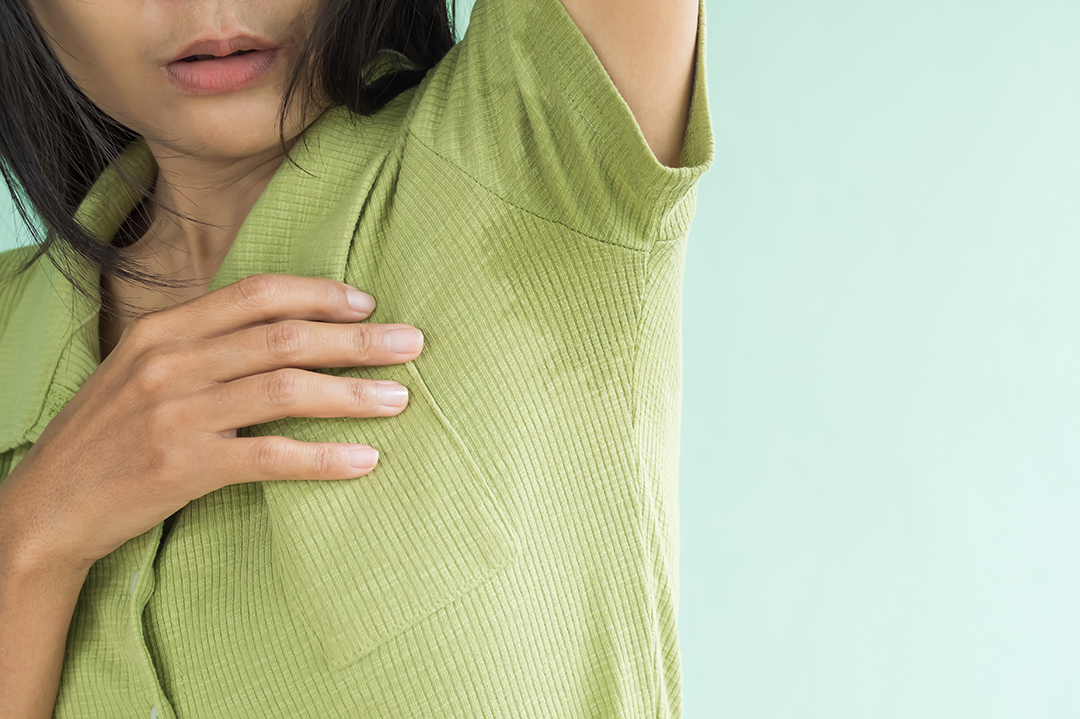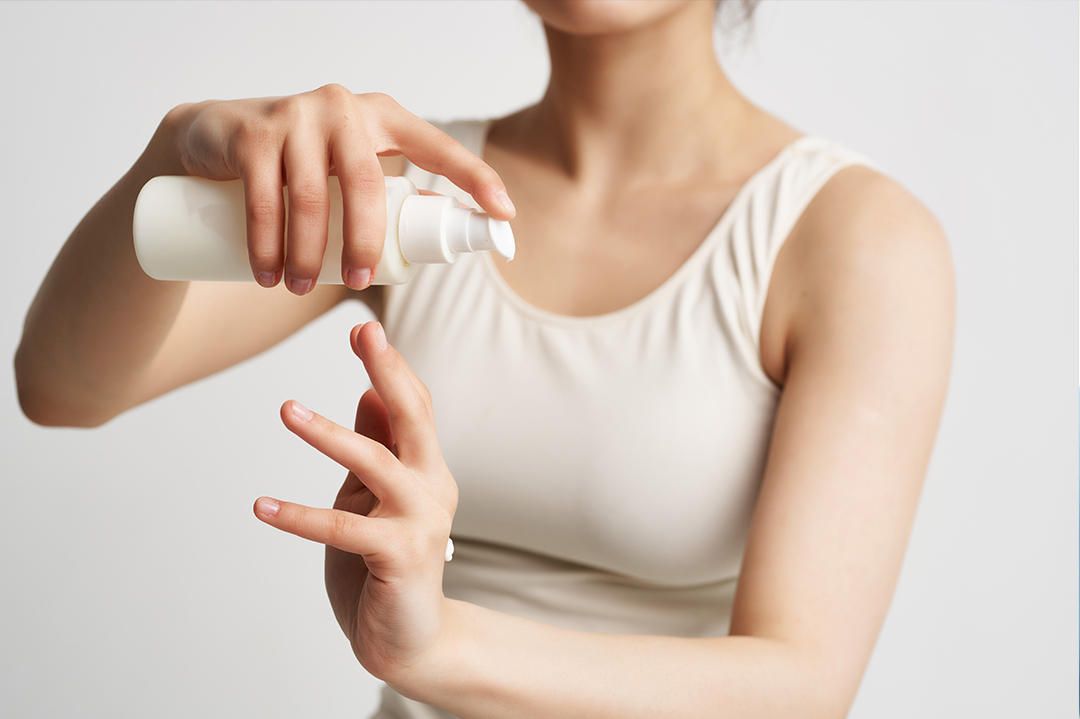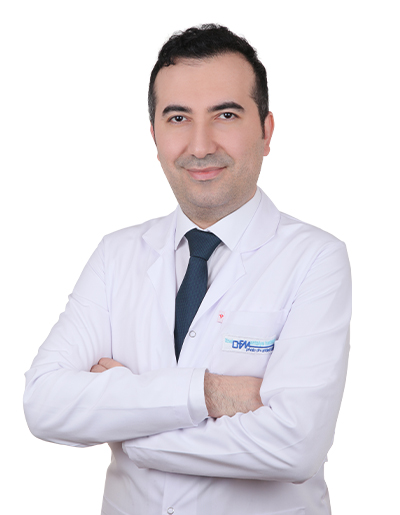
Hyperhidrosis means “excessive sweating.” It is a condition that can negatively affect social life and significantly reduce quality of life.
Is every increase in sweating considered hyperhidrosis?
Sweating is a natural response to an increase in body temperature. Increased sweating in hot environments, during exercise, or due to anxiety and stress is normal. However, when sweating occurs without these triggers, disrupts daily life, and affects self-confidence or performance, treatment may be necessary.
How common is hyperhidrosis?
It can occur in individuals of any age and gender.
Which parts of the body are affected by hyperhidrosis?
It may be limited to a specific area or involve the entire body. According to this, it is categorized as “localized hyperhidrosis” or “generalized hyperhidrosis.”
What is localized hyperhidrosis?
This is the most common form. It usually affects both sides of the body symmetrically — palms, soles, armpits, scalp, and neck are the most typical areas. It usually begins in childhood or adolescence and may decrease with age. The exact cause is often unknown, but emotional triggers such as nervousness, embarrassment, or excitement can increase sweating. It rarely occurs during sleep.

What is generalized hyperhidrosis?
This involves excessive sweating throughout the entire body. It may be related to infections, diabetes, overactive thyroid, certain medications, obesity, menopause, or nerve damage. Sometimes no underlying cause is found.
Does sweat from hyperhidrosis smell bad?
Sweat itself is odorless. However, excessive sweating — especially in the armpits and feet — can increase bacterial growth, leading to an unpleasant odor.
How is hyperhidrosis diagnosed?
Diagnosis is made by a dermatologist through a detailed medical history and examination. If necessary, tests may be done to rule out underlying causes, although extensive testing is not always required.
What are the treatment options for hyperhidrosis?

Treatment is planned based on the type, location, and severity of sweating. Options include topical treatments (medications applied to the skin), iontophoresis, botulinum toxin injections, surgical procedures, and oral medications. Each method has different levels of effectiveness and side effects.
What can patients do in daily life?
- Prefer breathable fabrics like 100% cotton,
- Use underarm pads,
- Wear loose-fitting, natural-fiber clothes,
- Use and ventilate leather shoes, change socks frequently,
- Choose cotton or antibacterial socks,
- Avoid excessive caffeine, spicy foods, and alcohol.
Specialist Dr. Adem ÖZDEMİR
• Dermoscopy Course, 29th National Dermatology Congress, Antalya, Turkey, 2021
• TDD Virtual Dermatology Meeting, 2021
• 13th Winter School of Dermatology, Turkish Society of Dermatology, 2021
• Surgical and Pathological Applications in Nail Diseases, Cadaver Course, Akdeniz University Faculty of Medicine, 2020
• Cadaver Trainers Meeting, Akdeniz University Faculty of Medicine, 2019
• Cosmetic Dermatology Course, 28th National Dermatology Congress, Antalya, Turkey, 2019
• 4th Dermatology Skills School, Turkish Society of Dermatology, 2019
• Özdemir A, Bilgiç A, Koyuncu A, Yılmaz E. Omalizumab in Chronic Urticaria; Real-life Data of 6-year Experience. Turkish Journal of Dermatology, 15(3): 66–73, Jul–Sep 2021.
| DOI: 10.4103/tjd.tjd.45_21
• Bilgiç A, Özdemir A, Kuteyla Can P, Koyuncu MA, Dönmez L, Akman-Karakaş A, Kocatürk E, Alpsoy E. Internalized stigma in chronic urticaria: A case-control study. Australas J Dermatol. 2022 Aug;63(3):e262–e265. doi: 10.1111/ajd.13889. Epub 2022 Jun 18. PMID: 35716361.
• Özdemir A, Başşorgun C. İ., Akman Karakaş A. Pigmented apocrine hidradenoma case and dermoscopic features: A Case Presentation. 6th DOD Dermatology Agenda (p.18), Sakarya, Turkey, 2019.
• Özdemir A, Özçentik Ünal B, Akman Karakaş A. A case of dress syndrome associated with carbamazepine and responded well to cyclosporine. 24th World Congress of Dermatology (p.2653), Milan, Italy, 2019.
• Özdemir A, Ünal B, Yılmaz E. Tadalafil-induced acneiform drug eruption: A Case Report. 27th National Dermatology Congress (p.419), Antalya, Turkey, 2018.
• Özdemir A, Ünal B, Akman Karakaş A, Alpsoy E. Generalized Fixed Drug Eruption resembling Pityriasis Rosea: A Case Report. 27th National Dermatology Congress (p.184), Antalya, Turkey, 2018.
• Özdemir A, Başşorgun C. İ., Temel A. B., Dicle Ö. Superficial basal cell carcinoma of the scalp: A rare and hard-to-treat condition. 17th World Congress on Cancers of the Skin (p.141), Sydney, Australia, 2018.
• “Aesthetic and Cosmetic Applications Around the Eye,” in *Congress Book of Dermatology*, edited by Akman Karakaş A, Antalya, Turkey, 2021.
• “Laser and Light Systems in Scar Treatment,” in *Congress Book of Dermatology*, edited by Akman Karakaş A, Ankara, Turkey, pp.77–83, 2021.
• Turkish Society of Dermatology
• European Academy of Dermatology and Venereology (EADV)
• Mediterranean Society of Dermatology and Venereal Diseases
• Turkish Society of Dermatology
• European Academy of Dermatology and Venereology (EADV)
• Mediterranean Society of Dermatology and Venereal Diseases



